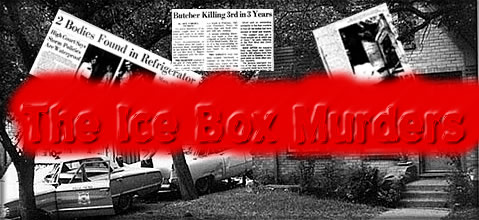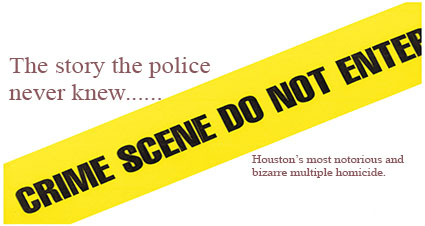by Hugh and Martha Gardenier
![]()
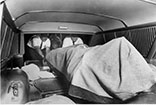
1965 was a bonus year for murders in Houston. The city was headed to a record of two hundred plus homicides. Riding this storm was the Houston Police Homicide Division, a small unit with few physical resources beyond the crime lab, but significant dedication and purpose. These detectives boasted one of the highest murder conviction rates in the nation. They had a right to be proud. Only 75 murders were uncleared since the division was formed in 1932. The Ice Box Murders is one of those 75 uncleared cases. No arrest has ever been made, and it remains to this date Houston's most notorious and bizarre multiple homicide.
"Hugh and Martha Gardenier have definitely fit pieces of the puzzle together with their exhaustive research and countless interviews. Expertly written, this in-depth look into the Rogers' family answers questions that HPD and the media never even attempted to ask. A chilling read and long overdue explanation for those of us who remember the story well."Sue Mayfield-Geiger Writer/Editor and native Houstonian.
"A grisly and haunting mystery, one of the most infamous in Texas history. No one has pursued the truth of the story with more compassion or knows it more fully than Hugh and Martha Gardenier."Richard Ray Anchor/Reporter KDFW-TV Dallas
- Chapter 4 - White Slums
- Chapter 9 - That Crazy Son
- Chapter 7 - On Ice
![]()
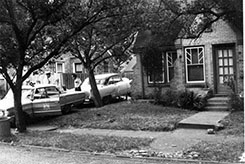
"The door spoke volumes about the family and the lack of trust between Charles and his parents. It seemed to be a misplaced memory from the boarding house at 51 Stanley, or the bygone flophouse, the Rogers Hotel on Washington Avenue. Places in the mind that were so bad that you kept everything, and everyone locked up. Fred and Edwina made a buck from all of them. Low class, drifting men traveling night trains and hot buses until they made it to Houston. Long-in-the-tooth women, with sagging jowls and arm flesh, addressed as Mrs., but never belonging to anyone. They were carnage with no pride left, and they strayed west on Washington Avenue because that's where the flops were."
"And then there were the "suicides." People who had fallen so far that the only step remaining was a gun, rope, knife or poison. If you were lucky you spotted them at the front desk and told them you were full. If you weren't, you cleaned up the mess after the cops dragged out the corpse. You learned to check every room and every closet daily, particularly the closets. The suicides were fond of the closets. Maybe they considered it a confessional, maybe they felt that no one who counted could see them do themselves with a twisted towel and a chair, a razor blade to the wrist, or the old favorite - clothesline hung from the ceiling light fixture. Opening the closet door was still an adventure for Charles."
"Allegations of a vice squad that was facilitating the heroin trade surfaced in early June 1954 when, without the knowledge of Chief Morrison, the Houston office of the Federal Bureau of Narcotics pulled Detective M.A. Billnitzer in for questioning. Billnitzer, in two separate interviews, was questioned over several hours about the seizure and final disposition of the heroin. After making a statement to the federal officers, the detective then went to Chief Morrison, who was confronted with the full magnitude of the problems in the vice division. Morrison tore into the Federal agents and tried to provide cover for his men until he could determine what really happened, but by that time it was too late. Detective Billnitzer blew his brains out in the night squad room on June 3."
"The four police officers filling the kitchen first noticed the escaping light from the single bulb in the refrigerator, then the slightly pungent odor of meat that was beginning to go bad. As the door swung all the way open, the enormity of the situation came into full focus. A decapitated head was lodged in the vegetable keeper. A women's head, her lifeless eyes staring, paralyzed in the last instant of death. Her face, contorted, bruised, maybe mangled, matted with white-gray hair. A torso, split along the backbone, stuffed between shelves. Feet severed at the ankles. Legs cut at the knees. Thighs detached at the hips. And it went on. A jar of Gerber's baby food sat on a shelf too small for a body part. Another jar of jelly was jammed against an arm. Peanut butter rested next to one of the legs. And in the middle sat a partially eaten raw onion. Paulk didn't open the freezer compartment. There seemed to be no reason."
Now Available On Kindle and For Other E-readers
The Ice Box Murders is now available in the Kindle Store at Amazon.com and at Smashwords.com in a variety of e-book formats. For more pictures and case information see The Ice Box Murders Facebook page at Facebook - The Ice Box Murders
The Crime
On Father's Day, June 20, 1965, Fred Rogers, age eighty-one, and his wife, Edwina, age seventy-two, received a surprise. They were murdered. Three days later their mutilated, dissected bodies were found in the kitchen refrigerator of their modest home by two Houston police officers. The patrolmen thought they were making a routine call. Instead they discovered the perfect crime. The next morning, early newspaper headlines attributed the murders to the couple's forty-three year old son, Charles Frederick Rogers. Described as brilliant, erratic, and reclusive, Charles Rogers dominated newspaper headlines for weeks and became Houston's very own Norman Bates.
The Story
![]()
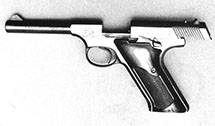
Houston police never made an arrest, nor did they find the trial of the narcissistic killer. It wasn't for the lack of trying, though. James Paulk, a dedicated detective, took the case personally. This is the story the public never knew, the press didn't piece together, and Houston's movers and shakers prayed would be buried forever. Beyond the black and white of the criminal investigation files, this is the account of a hidden motive, parents who weren't what they seemed, and a son that was far from being a recluse. Police corruption, gambling, narcotics, gun-running, and federal probes blend in a stew that is the saga of a Texas family, an ambitious police captain, a perfect crime, and a city with a dark side.
Amazon Kindle Store

